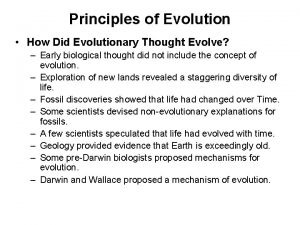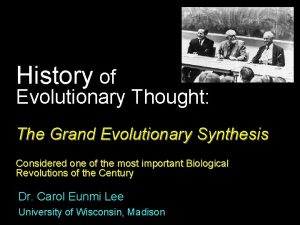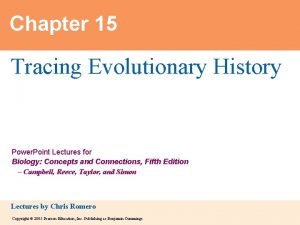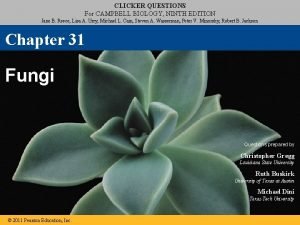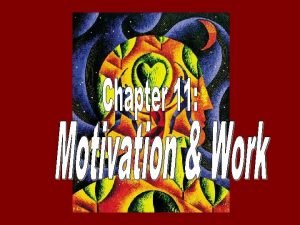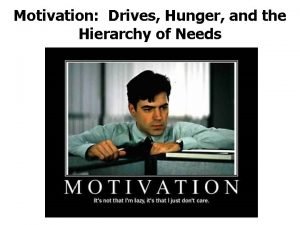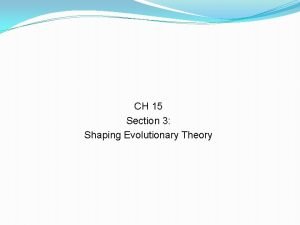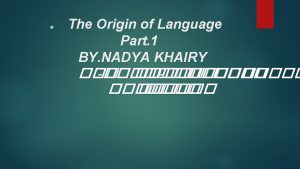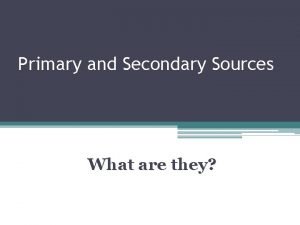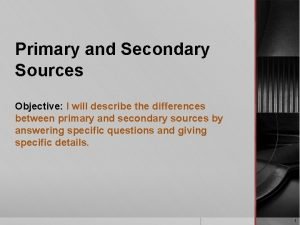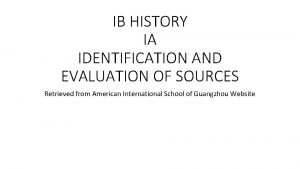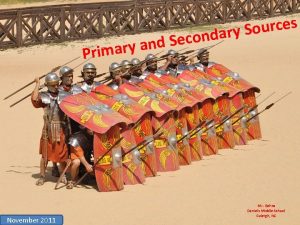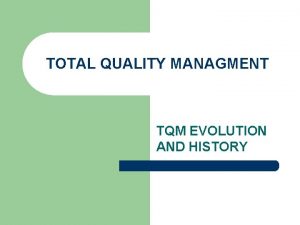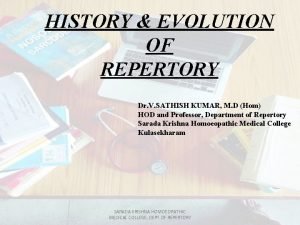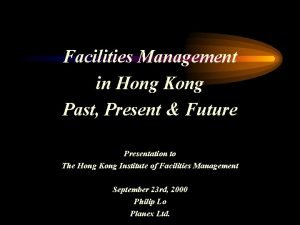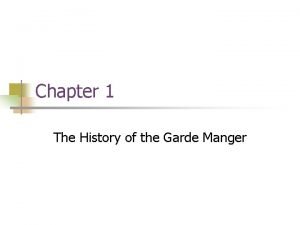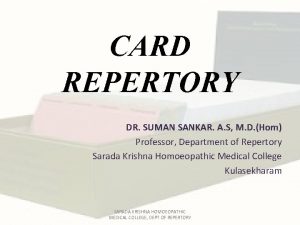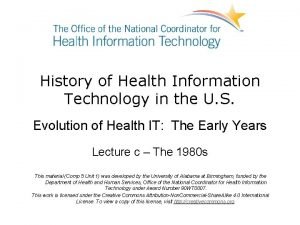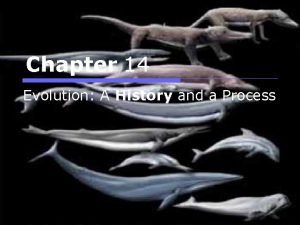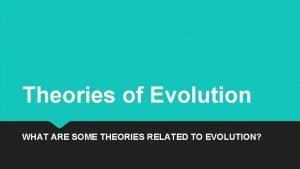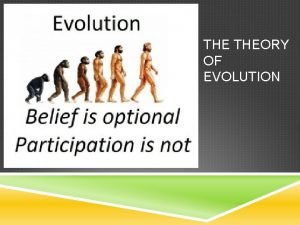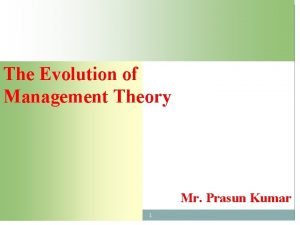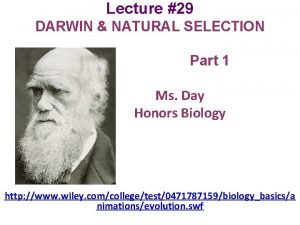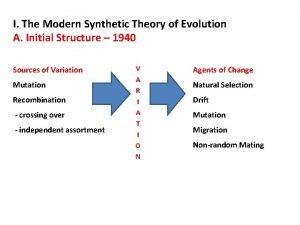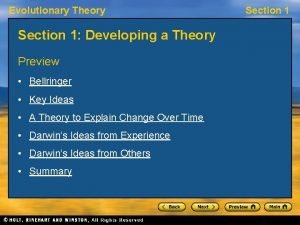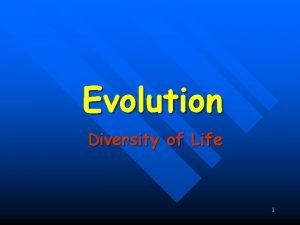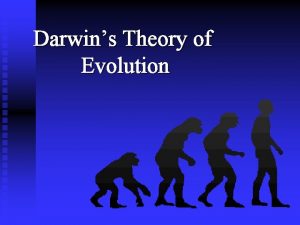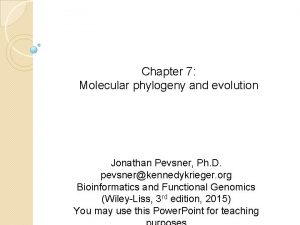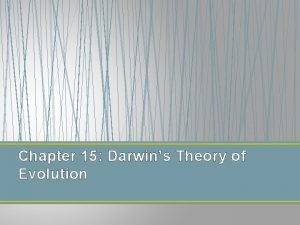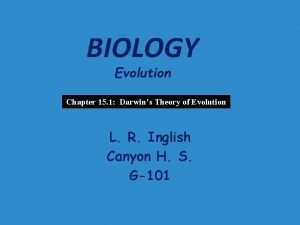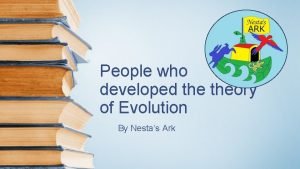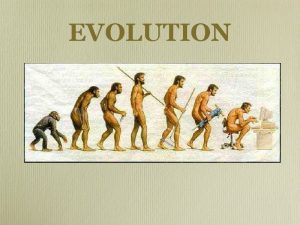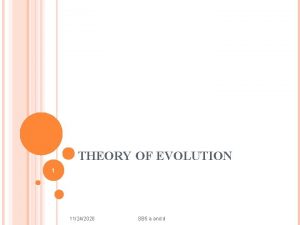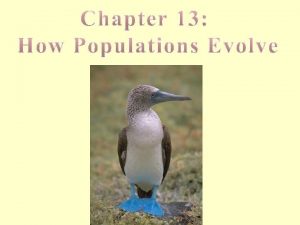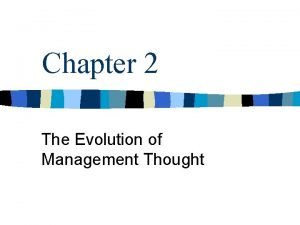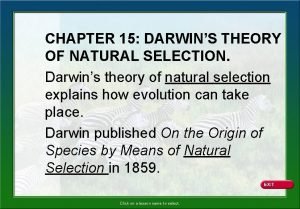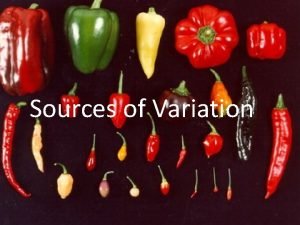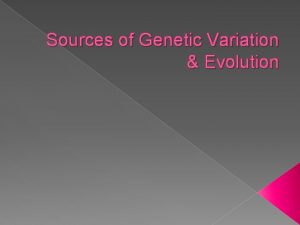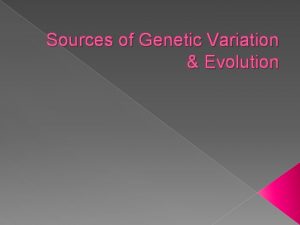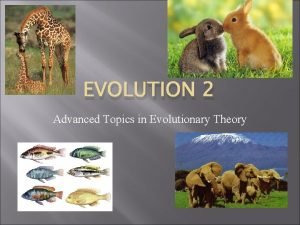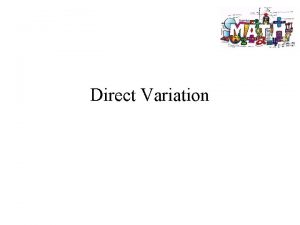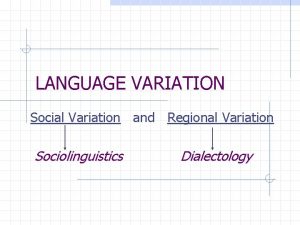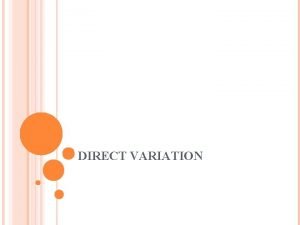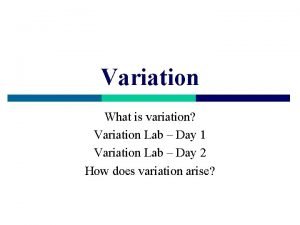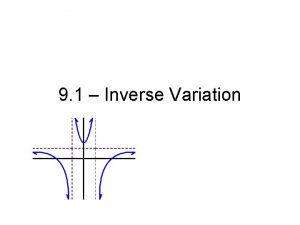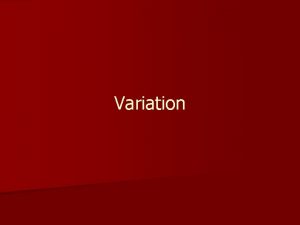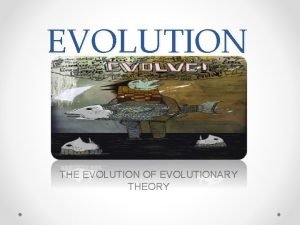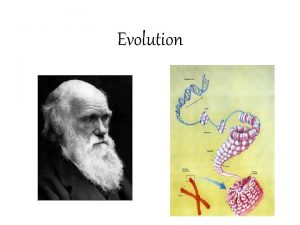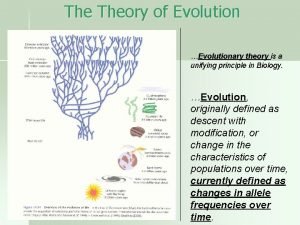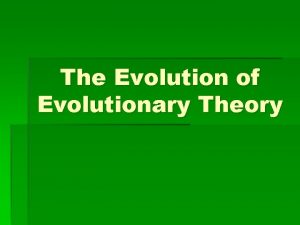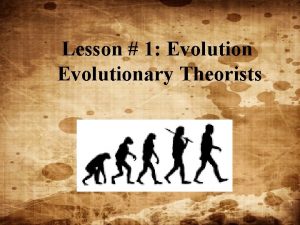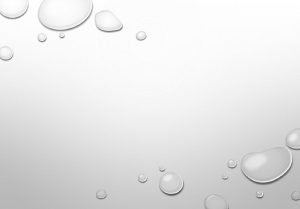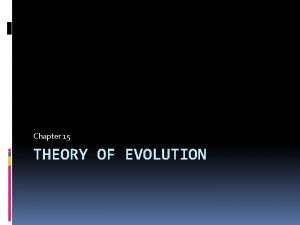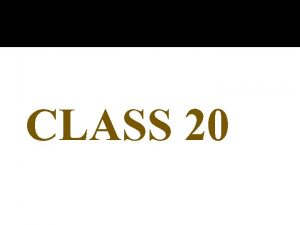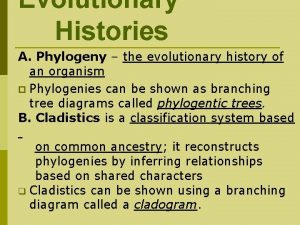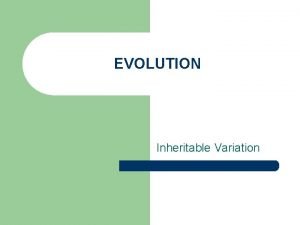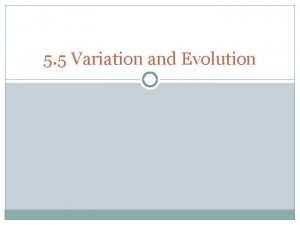Evolution History of evolutionary theory Sources of variation





















































- Slides: 53

Evolution

§ History of evolutionary theory § Sources of variation § Agents of change § Population controls

Pre 1700’s § Aristotle and Plato - different forms of life evolve from one another § Christians - Creation as in Genesis

Cuvier § Theory of Catastrophism § Local catastrophies caused extinctions § Surrounding species repopulated areas after catastrophies

Lamarck § Inheritance of acquired characteristics

Darwin § Studied theology and natural history § Naturalist on Beagle survey ship § Wrote Origin of The Species

Voyage of the Beagle

Galapagus Islands







Darwin’s Theories § All organisms related through a common ancestor § Species do not remain unchanged over time

Darwin’s Reasons § High reproductive rate leads to continual struggle for survival of offspring § Variation of characteristics mean some are better adapted § Those with favourable variations survive to reproduce § Each successive generation is better adapted § Eventually a new species will evolve

Sources of Variation § Mutations produce new alleles § Sexual recombination and crossing over at meiosis creates variation of offspring

Agents of change § § § § Natural selection Genetic drift Founder effect Bottleneck effect Gene migration Mutations Non-random mating

Natural Selection § Environment acts on phenotype § Stabilising selection § Directional selection § Disruptive selection

Stabilizing selection § Maintains population in a stable form § Favours the average

Directional selection § Favours phenotype at one extreme § Leads to shift in average variation

Disruptive selection § Favours both extremes


Disruptive selection

Genetic Drift § In small populations § Causes change fluctuations in gene pool § A change in the gene pool of a small population due to chance


Founder Effect § Genetic drift in a new colony § Only a few founding members of a population


Bottleneck Effect § Disaster reduces population to a few survivors § Random deaths § Some alleles lost from gene pool, others over represented


Gene Miration § Immigration § emmigration

mutations § Substitute 1 allele for another


Non-Random Mating § Mate near-by - often inbreed causing alleles to become homozygous § Unfavourable genes enhanced


Increase genetic variability Mutations immigration Decrease genetic variability Natural selection Emigration Non-random mating Genetic drift

Evidence for Evolution § § § Biogeography Fossil record Comparative anatomy Comparative embryology Molecular biology domestication

Biogeography § Geologically separated areas inhabited by organisms that are ecologically similar § Endemic species on islands


Fossil Record § Non-living object from the ground that indicates former presence of a living thing

Fossil types § § § Caste Mould Deep-frozen In amber Tar lakes Turn to stone

Cast

Bone to Stone

Comparative Anatomy § Homologous structures § Similar characteristics from common ancestry



Analogous Structures § Same function § Different ancestry


Vestigial Organs § Organs that are reduced or lost


Comparative Embryology § Early embryonic stages of all vertebrates very similar


Molecular Biology § Similar species have only small differences in DNA and proteins
 Chapter 15 section 3 shaping evolutionary theory answer key
Chapter 15 section 3 shaping evolutionary theory answer key Direct variation equation
Direct variation equation Direct and inverse graphs
Direct and inverse graphs How to calculate sst in regression
How to calculate sst in regression Ellis van creveld syndrome
Ellis van creveld syndrome History of evolutionary thought
History of evolutionary thought Chapter 15 tracing evolutionary history
Chapter 15 tracing evolutionary history Evolutionary history
Evolutionary history Evolution of populations section 16-1 genes and variation
Evolution of populations section 16-1 genes and variation Evolution of populations section 16-1 genes and variation
Evolution of populations section 16-1 genes and variation Print sources of information
Print sources of information Importance of water management
Importance of water management Motivational cycle
Motivational cycle Evolutionary theory of motivation
Evolutionary theory of motivation Evolutionary theory of motivation
Evolutionary theory of motivation Arousal theory
Arousal theory Evolutionary theory of motivation
Evolutionary theory of motivation Chapter 15 darwin's theory of evolution section 15-1
Chapter 15 darwin's theory of evolution section 15-1 Chapter 15 section 3 shaping evolutionary theory
Chapter 15 section 3 shaping evolutionary theory Religion
Religion The devine source
The devine source Secondary sources
Secondary sources What is an objective source
What is an objective source What are the five sources of history
What are the five sources of history Opvl evaluation
Opvl evaluation Secondary sources of history
Secondary sources of history Maths bot number of the day
Maths bot number of the day Total quality managment
Total quality managment History and evolution of repertory
History and evolution of repertory Future of facilities management
Future of facilities management Garde manger tools
Garde manger tools Kishore card repertory ppt
Kishore card repertory ppt History of kent repertory
History of kent repertory History and evolution of health information technology
History and evolution of health information technology Chapter 14 evolution a history and a process
Chapter 14 evolution a history and a process Lamarck's theory of evolution
Lamarck's theory of evolution Developmental homology
Developmental homology Evolution of management theory
Evolution of management theory What was lamarck's theory of evolution
What was lamarck's theory of evolution Synthetic theory
Synthetic theory Modern evolution theory
Modern evolution theory Lamarck’s theory of evolution.
Lamarck’s theory of evolution. Lamarck's theory of evolution
Lamarck's theory of evolution Neutral theory of molecular evolution notes
Neutral theory of molecular evolution notes Chapter 17 darwins theory of evolution
Chapter 17 darwins theory of evolution Chapter 15 darwin's theory of evolution section 15-1
Chapter 15 darwin's theory of evolution section 15-1 Chapter 15 darwin's theory of evolution section review 15-1
Chapter 15 darwin's theory of evolution section review 15-1 Charles darwin theory of evolution
Charles darwin theory of evolution Who formulated theory of evolution? *
Who formulated theory of evolution? * Lamarck theory of evolution notes
Lamarck theory of evolution notes Theory of evolution
Theory of evolution Theory of evolution
Theory of evolution Chapter 2 the evolution of management thought pdf
Chapter 2 the evolution of management thought pdf Natural selection
Natural selection




